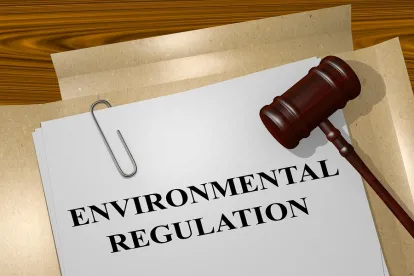As part of the Fit for 55 package, the Commission presented a proposal to revise Directive 2003/87 establishing a system for GHG emission allowance trading within the EU, as well as related legal acts.
According to the Commission’s Explanatory Memorandum, ensuring continued effective protection for the sectors exposed to a significant risk of carbon leakage while incentivising the uptake of low-carbon technologies will remain a specific objective of the EU ETS. Other objectives included addressing the distributional and social effects of this transition, by reviewing the use of auctioning revenues and the size and functioning of the low-carbon funding mechanisms.
In the Communication accompanying the package, the Commission explains that by 2030, all sectors covered by the revised EU ETS will need to reduce their GHG emission by 61%, compared to 2005. To achieve this, the annual emissions cap would be lowered in line with the pathway to meeting the higher 2030 ambition. Concretely, the so-called linear reduction factor would be changed to 4.2% from the year following the entry into force of the revision, combined with a one-off downward adjustment of the cap so the new linear reduction factor has the same effect as if it would have applied from 2021.
From 2026 onwards, free allocation of allowances to stationary installations would be made conditional on decarbonisation efforts in order to incentivise the uptake of low-carbon technologies. Operators of installations for which energy audits are mandatory under the Energy Efficiency Directive (EED) would have to implement the recommendations, or to demonstrate the implementation of other equivalent measures to reduce GHG emissions. Otherwise, their free allocation would be reduced by 25%.
Free allocation would also be linked to the proposed Carbon Border Adjustment Mechanism (CBAM). No free allocation would be given to installations in sectors or subsectors by the CBAM, with the exception of its first years of operation, when they would receive a reduced amounts of free allowances.
To strengthen the role of carbon pricing in the transport sector, the Commission proposes gradually extending the current EU ETS to the intra-EU maritime sector over the period 2023 to 2025. To reduce emissions from the aviation sector, free emission allowances to this sector would be phased out. To complement these changes, the Commission also proposes a ReFuelEU Aviation Regulation to promote the uptake of sustainable fuels in the aviation and maritime sectors.
A new, separate ETS would be set up for emissions from the buildings and the road transport sectors. The emissions cap for this new ETS would be set from 2026 based on data collected under the Effort Sharing Regulation 2018/842 to reach emission reductions of 43% in 2030 compared to 2005. Once the monitoring and reporting of the new emissions trading is established, the total quantity of allowances for 2028 would be adjusted on the basis of the available monitoring, reporting and verification (MRV) data for the period 2024 to 2026. The allowances for this new ETS would be auctioned and no free allocation provided. However, as a mitigation measure, 150 million allowances would be made available to the Innovation Fund. A Market Stability Reserve would also operate in these two sectors.
The scope of the Innovation Fund is extended to allow it to provide support to projects through competitive tendering mechanisms such as Carbon contracts for difference (CCDs). CCDs are meant to guarantee investors in innovative climate-friendly technologies a fixed price that rewards CO2 emission reductions above the current price levels in the EU ETS. The European Commission would be empowered to adopt delegated acts on the precise rules for this type of support. Under the proposal, the fund would also support environmentally safe carbon capture and utilisation (CCU) that contributes substantially to mitigating climate change, as well as products substituting carbon intensive ones produced in covered sectors, and the environmentally safe capture and geological storage (CCS) of CO2, as well as innovative renewable energy and energy storage technologies, in geographically balanced locations.
The Modernisation Fund would no longer support investments related to any fossil fuels, not only solid fossil fuels as is currently the case. In addition, the proposal increases the percentage of the fund that needs to be invested in priority investments; gives more prominence to renewable sources and energy efficiency investments in transport, buildings, waste and agriculture; targets energy efficiency as a priority area at the demand side, including industry explicitly as eligible sector; and includes the support of households to address energy poverty. Revenues from auctioning an additional 2.5 % of the capped amount of allowances would fund the energy transition of the Member States with GDP per capita below 65 % of the EU average (2016-2018), through the Modernisation Fund.
Marco Mensink, Director General of the European Chemical industry association Cefic, commented that the presented review of the EU ETS “might be the most crucial change to the EU ETS so far”. Indicating the intense debate that might follow on the package, Tim Gore, Head of the Climate and Circular Economy Programme at the Institute for European Environmental Policy (IEEP) called the energy-intensive industries “the big remaining free riders”. The proposal to phase-out their emission allowance “hand-outs” only by 2036 had to be strengthened. Florian Rothenberg an Analyst on EU power and carbon markets at ICIS, an independent commodity intelligence services firm, expected that for energy-intensive industries, the green transition will take longer as “[i]t takes them more time to react than the power sector because they are less active in carbon trading […]. Smaller players in particular haven’t been really active in the ETS for a long time, they often purchase allowances at the last minute, ahead of compliance deadlines. That won’t work anymore in the next years, they will have to change their buying strategy, especially if free allocations decline. And at the same time, they also have to start thinking about the abatement options for their respective units.”




 />i
/>i

